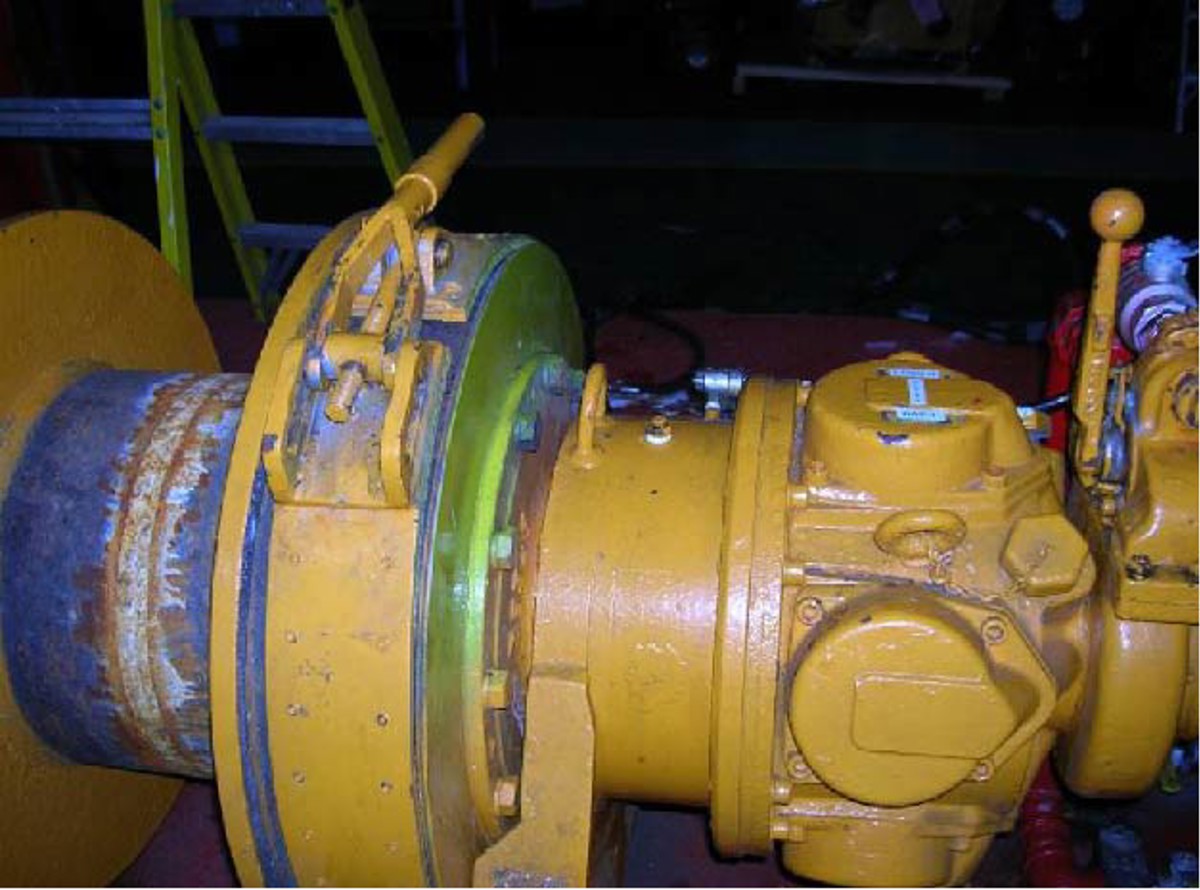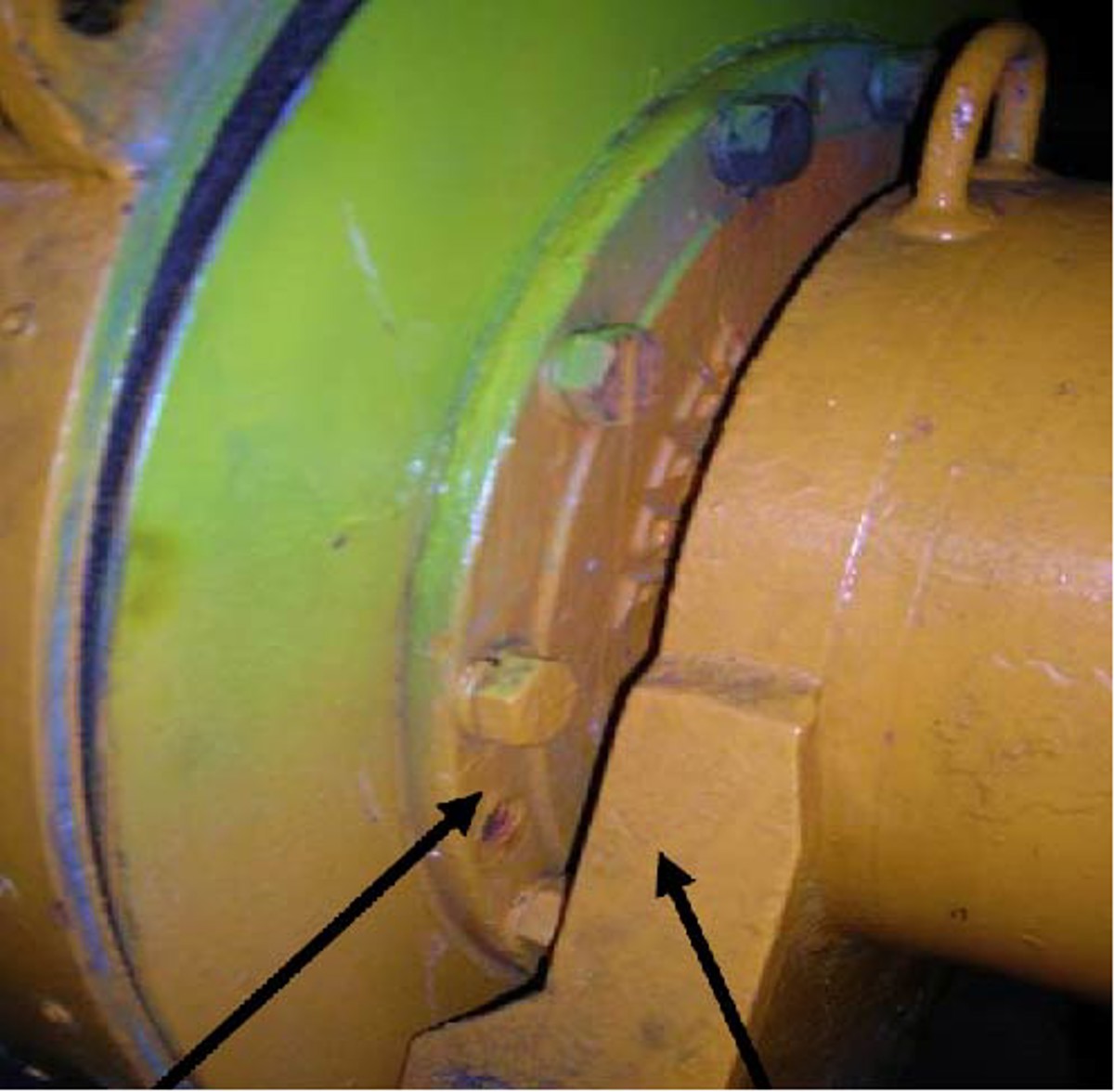Pinch points on winches – hand safety
- Safety Flash
- Published on 31 October 2007
- Generated on 6 January 2026
- IMCA SF 09/07
- 1 minute read
Jump to:
A Member has identified a potentially serious hazard on a tugger winch, temporarily installed on a vessel deck, wherein a hand could be ‘drawn in’ between the winch drum cheek plate and the winch base.

typical tugger winch

detail of gap between winch drum cheek plate and the winch base (L) rotating ring of bolts (R) stationary winch base
The operator for such a winch would typically stand with his right hand on the control lever.
It is possible that an operator (or colleague standing nearby) could put his left hand on the winch base, for example to brace against vessel movement. If the winch was pulling in at the same time a hand could be drawn into the gap between the bolts and the base.
Lessons learned
These winches or similar models are in widespread use and not all of them have adequate guards. It is recommended that winches with unguarded pinch-point hazards are identified and appropriate actions taken as an immediate measure:
- Hazard warning signs should be applied to the winches.
- Personnel operating or working in the vicinity of the winches should be briefed about the potential hazard.
An example of an appropriate guard that could be fitted to such a winch is shown below:

example guard for tugger winch
IMCA Safety Flashes summarise key safety matters and incidents, allowing lessons to be more easily learnt for the benefit of the entire offshore industry.
The effectiveness of the IMCA Safety Flash system depends on the industry sharing information and so avoiding repeat incidents. Incidents are classified according to IOGP's Life Saving Rules.
All information is anonymised or sanitised, as appropriate, and warnings for graphic content included where possible.
IMCA makes every effort to ensure both the accuracy and reliability of the information shared, but is not be liable for any guidance and/or recommendation and/or statement herein contained.
The information contained in this document does not fulfil or replace any individual's or Member's legal, regulatory or other duties or obligations in respect of their operations. Individuals and Members remain solely responsible for the safe, lawful and proper conduct of their operations.
Share your safety incidents with IMCA online. Sign-up to receive Safety Flashes straight to your email.